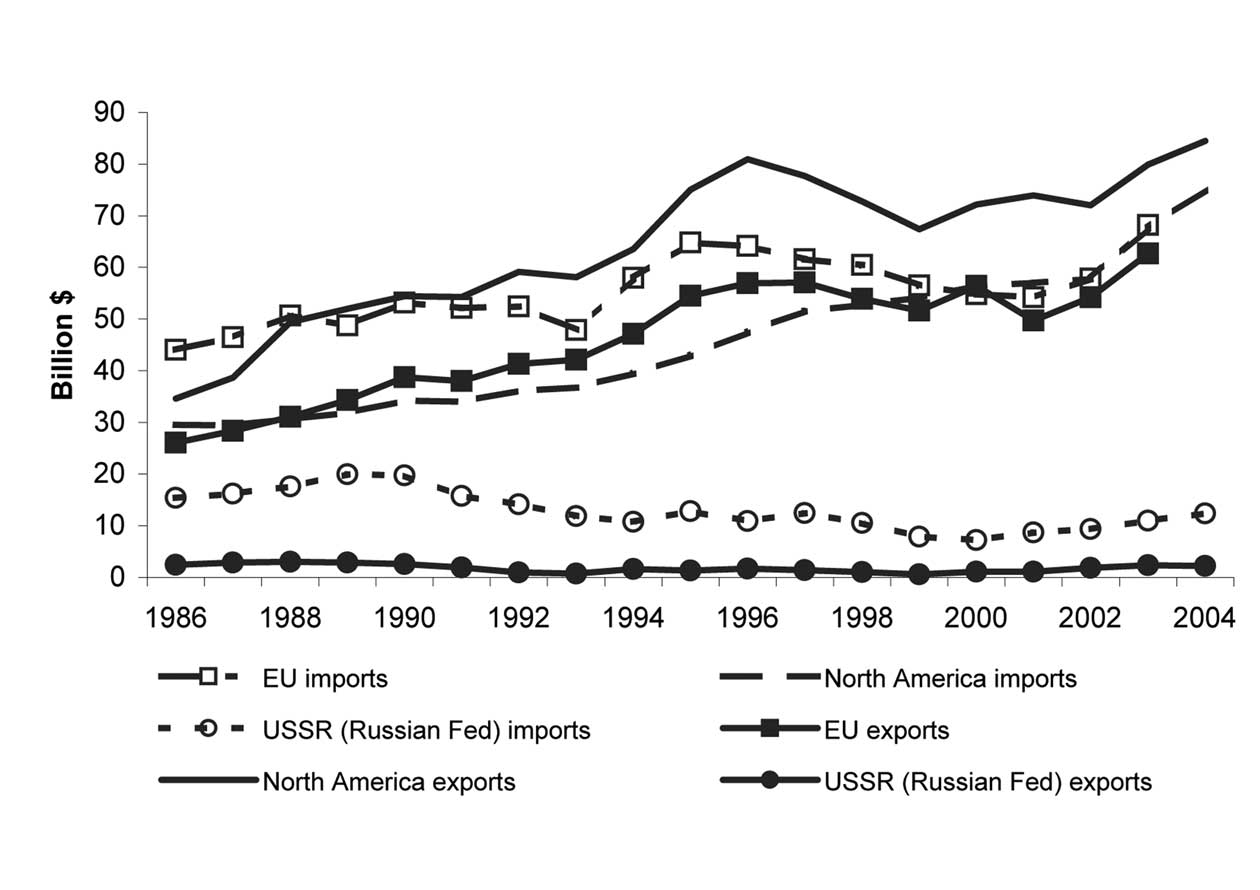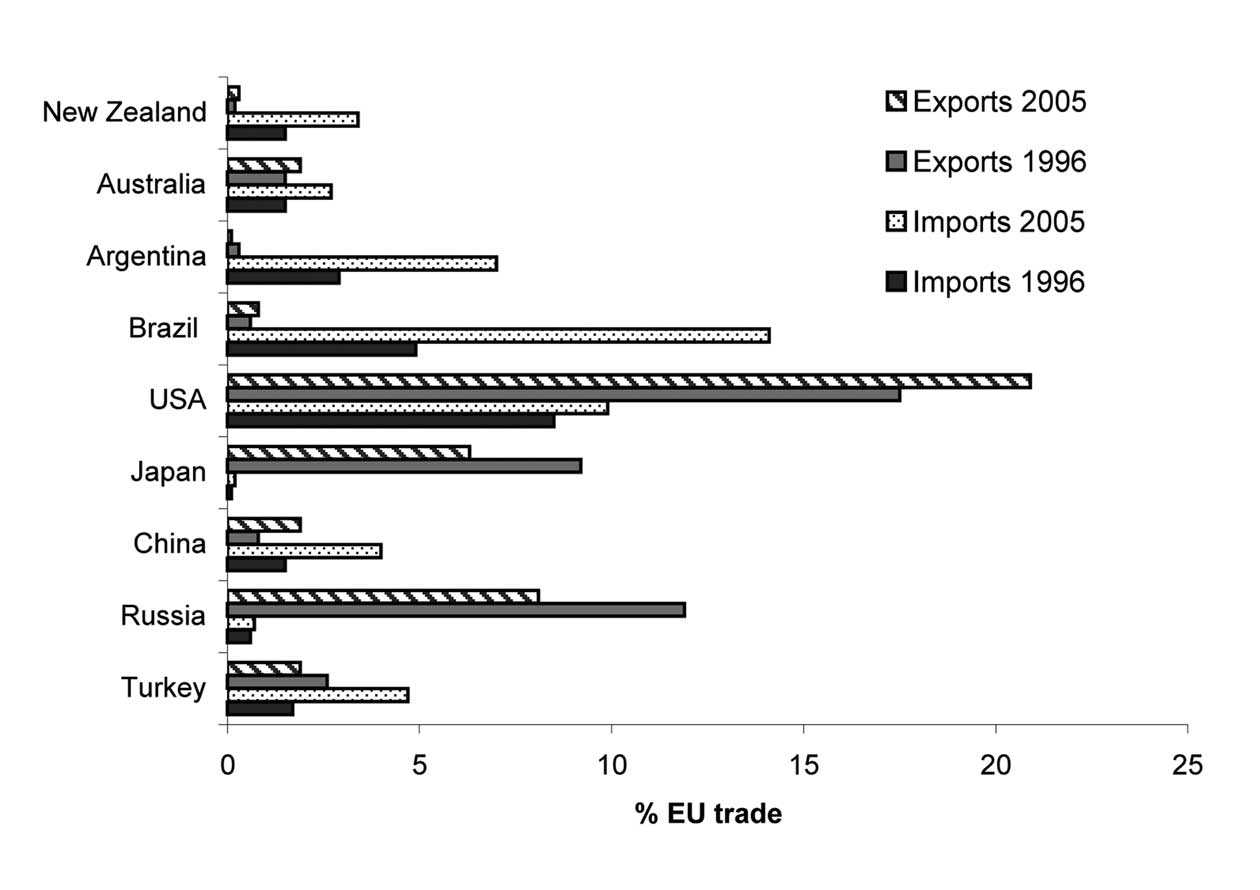
| Previous | Return to table of contents | Search Reports | Next |
| « Back to weltagrarbericht.de | ||
Environmental, Economic, and Social Impacts of NAE Agriculture and AKST | 107

Figure 3-14. Trade (imports and exports) in NAE from 1986-2004. Source: FAO, 2008c
ogies can be adapted to local circumstances developing skills within the local community. |
|
much of this activity has been to improve the productivity of traditional farming activities in developing countries as production moves from local self-sufficiency to meet market needs whether at home or abroad, there is a need to employ technologies that cope both with the needs of storage and transport. |

Figure 3-15. EU Agricultural imports and exports in 1996 and 2005 as % total trade (extra EU trade only). Source: European Commission 2000b, 2006b.
| Previous | Return to table of contents | Search Reports | Next |
| « Back to weltagrarbericht.de | ||